 A splendid Highly Pathogenic Avian Influenza virus cake addressing the WAD2025 theme of “Effects of Disease” formed part of the morning tea celebration of World Albatross Day by the Australian Antarctic Division on 19 June 2025, photograph by Jonathon Barrington
A splendid Highly Pathogenic Avian Influenza virus cake addressing the WAD2025 theme of “Effects of Disease” formed part of the morning tea celebration of World Albatross Day by the Australian Antarctic Division on 19 June 2025, photograph by Jonathon Barrington
World Albatross Day was first celebrated on 19 June 2020. To help create awareness a cake-baking competition was held that proved popular with no less than 72 cakes entered into the “Great Albicake Bake Off”. Since then, baking and displaying “albicakes” has continued on 19 June each year, notably by the Australian Antarctic Division and the Royal Albatross Centre in New Zealand.
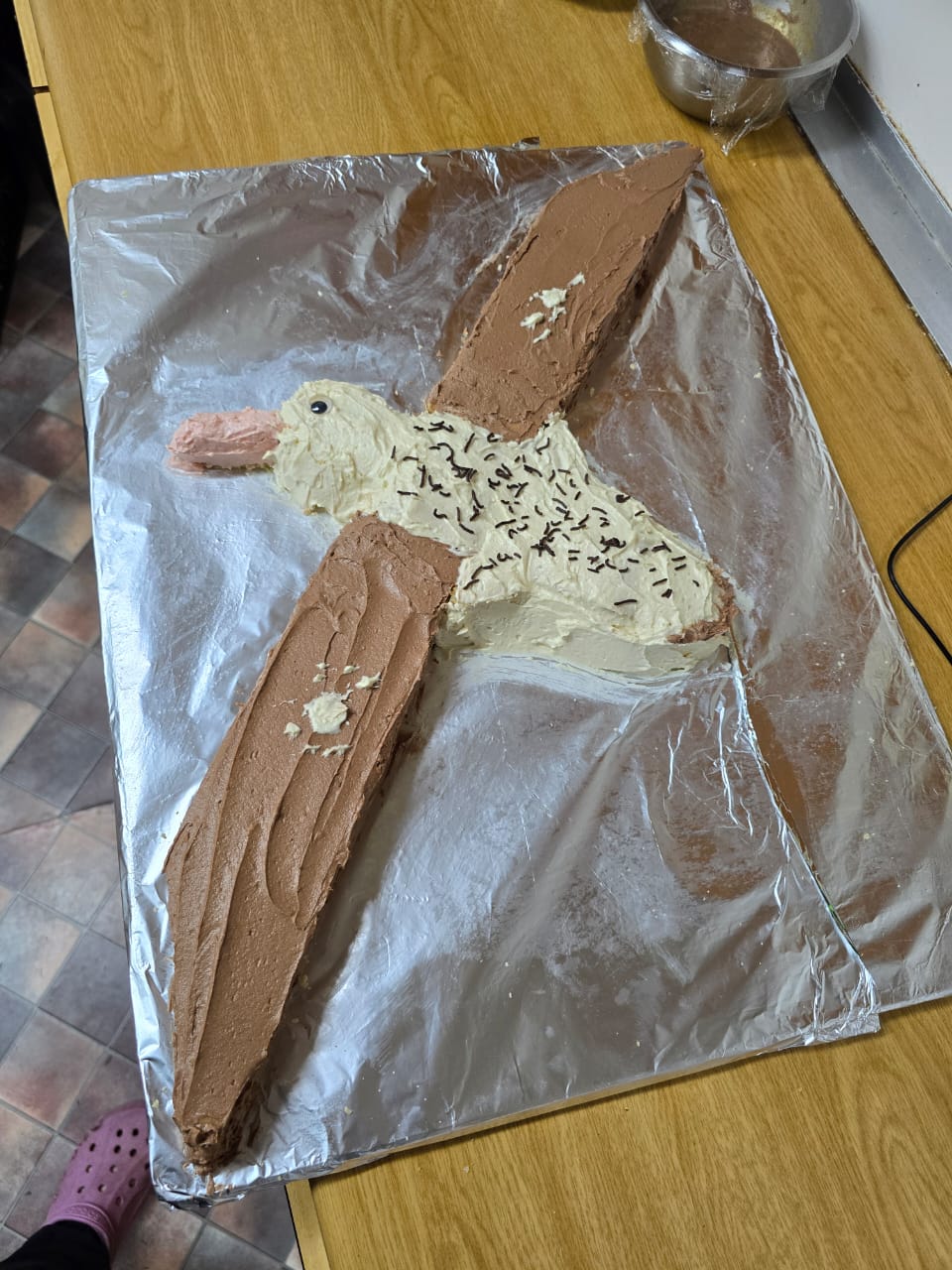

An albicake of a Tristan Albatross created and photographed by Michelle Risi (front row right) on Gough Island as a member of the 70th South African Overwintering Team
In the hope that baking cakes with an albatross theme on World Albatross Day will develop into a full-blown tradition around the world, to complement the displaying of banners, here is a portfolio of albicakes produced, and I am sure eaten, for this year’s day and its theme “Effects of Disease”.

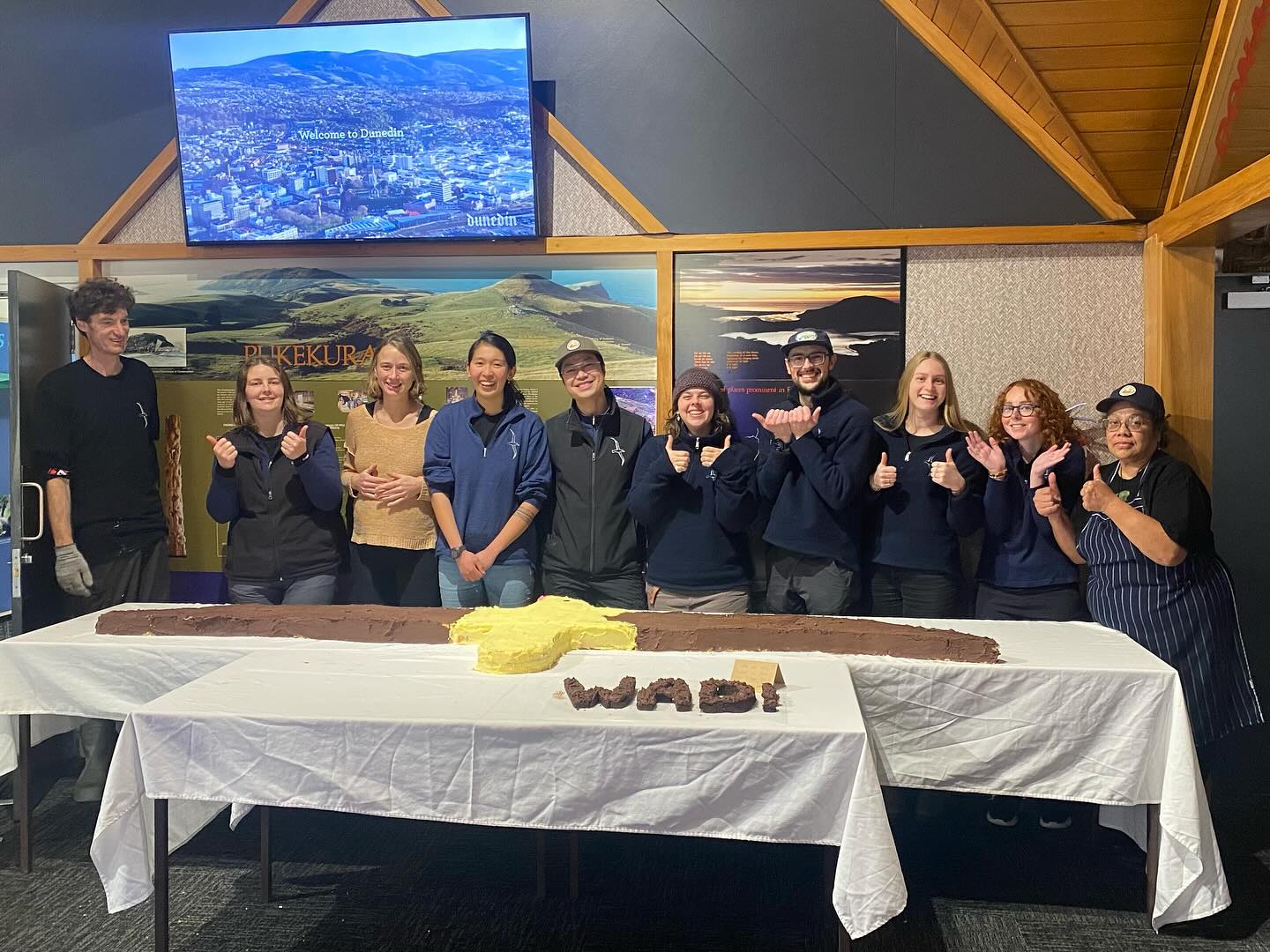
The Royal Albatross Centre continued its tradition of baking a cake depicting a life-sized Northern Royal Albatross in flight
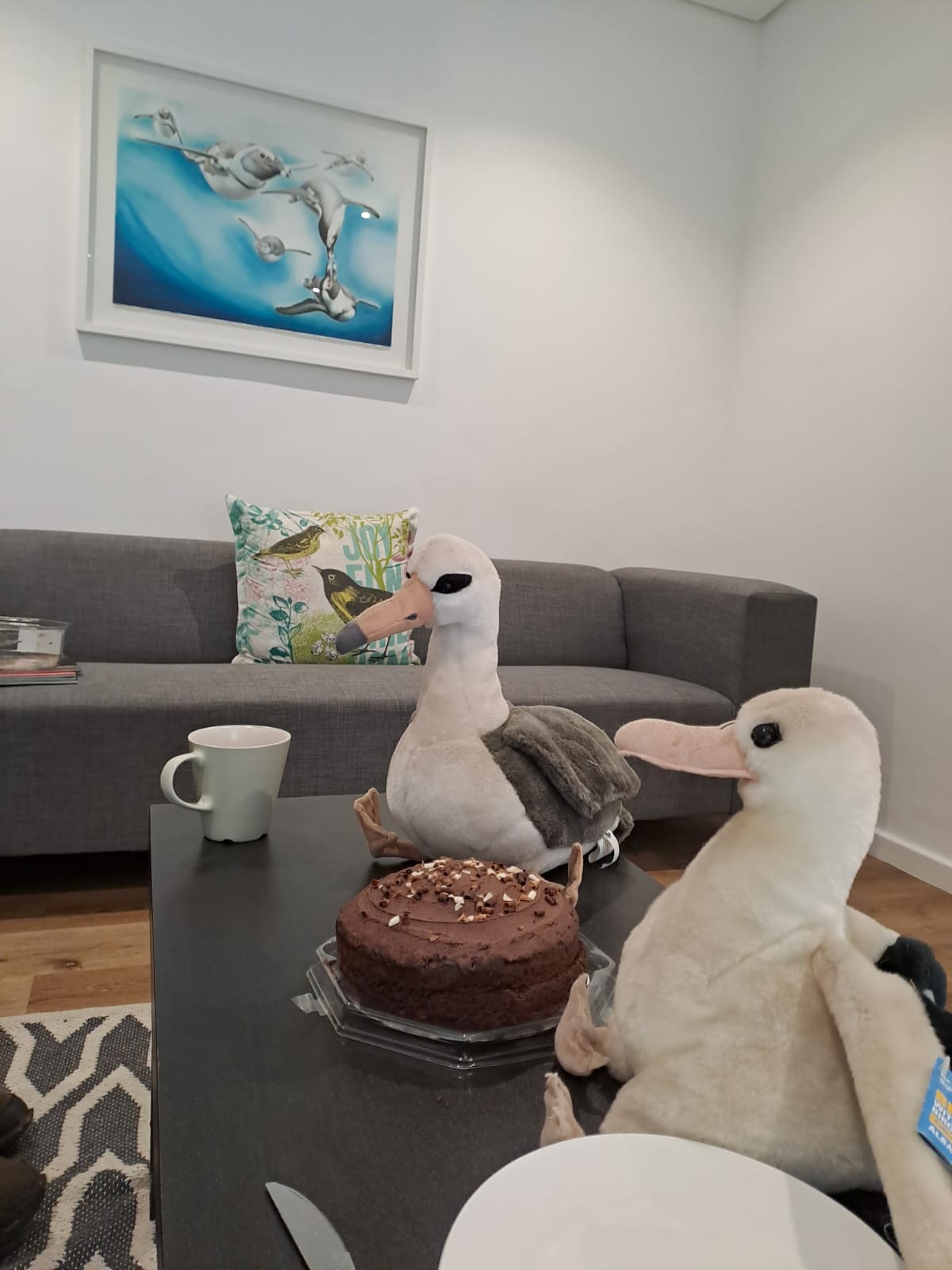
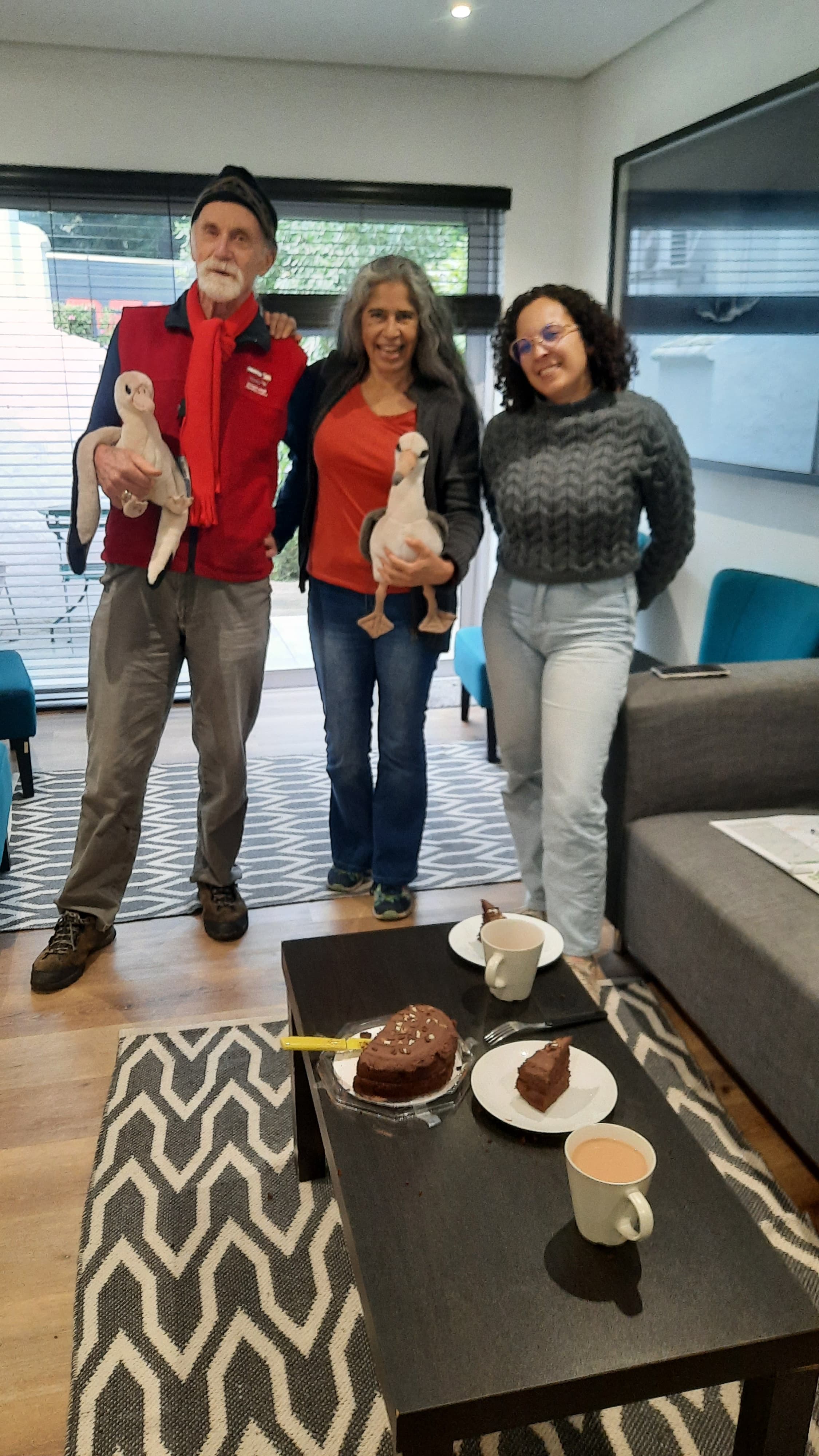
The Mouse-Free Marion Project cheated with a shop-bought chocolate cake in Cape Town. Left and right, John Cooper and Robyn Adams (MFM Project), centre Andrea Angel (Albatross Task Force), along with John’s Laysan and Wandering Albatross plushies, photograph by Reason Nyengera
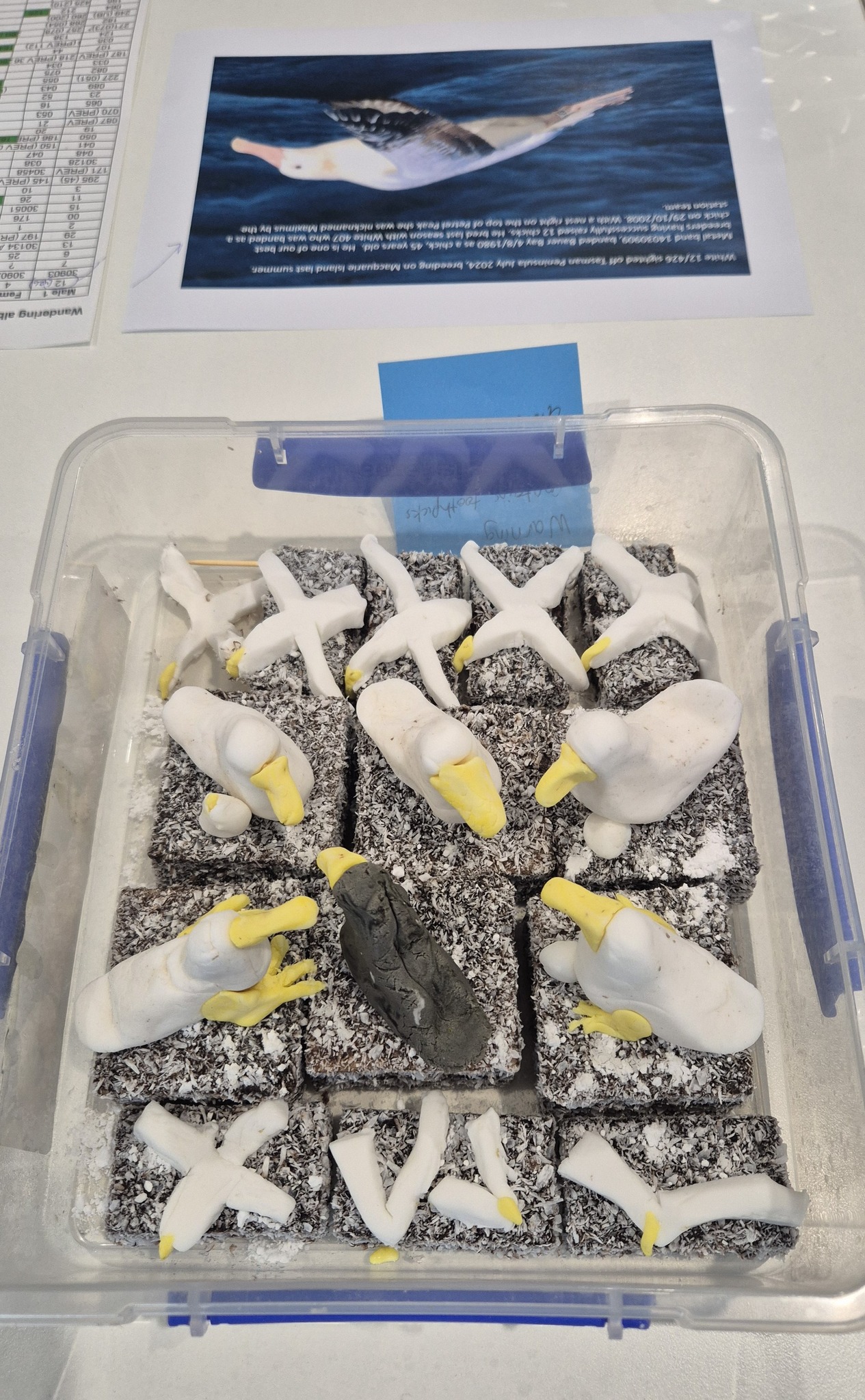
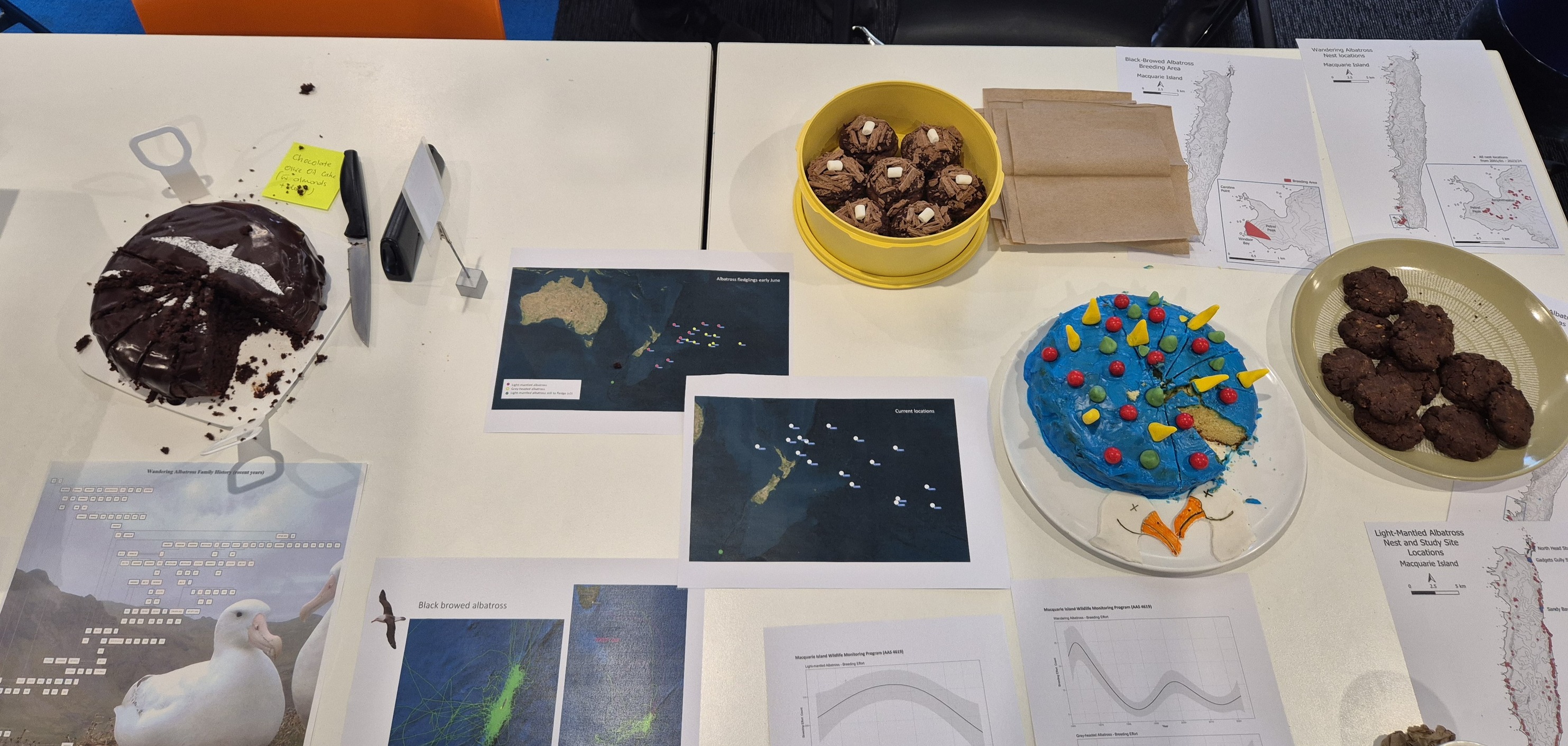
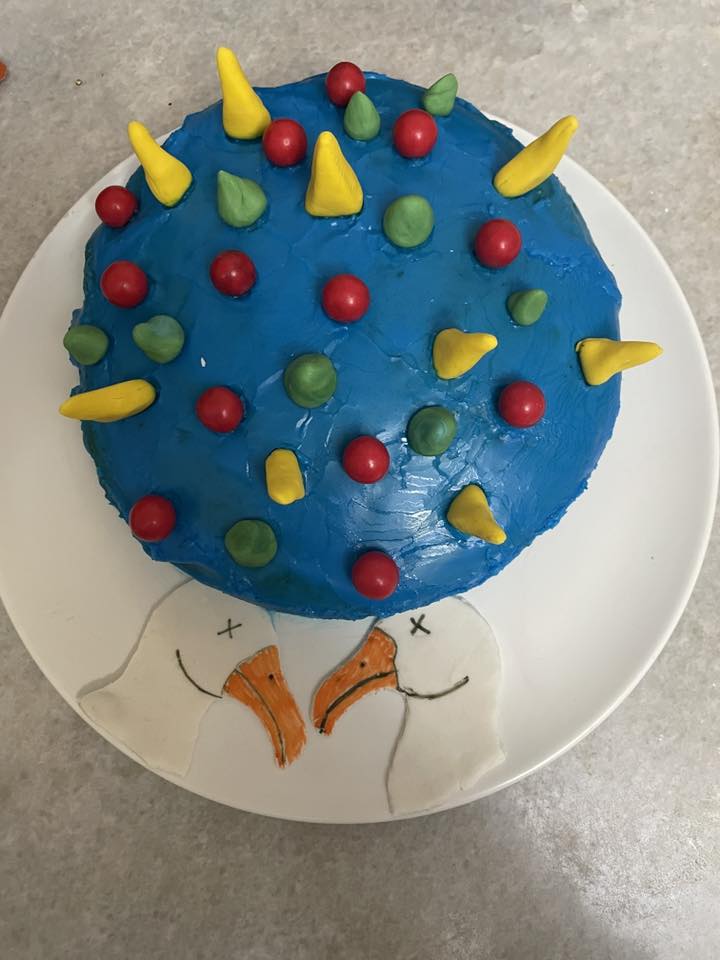
More albicakes on display at the Australian Antarctic Division on 19 June 2025, photographs by Jonathon Barrington and Wendy Pyper
The ACAP Secretariat has started to give thought as to what might be the theme for “WAD2026”. Perhaps there should be a repeat of the Great Albicake Bake Off”? Watch this space for an announcement in due course!
John Cooper, Emeritus Information Officer, Agreement on the Conservation of Albatrosses and Petrels, 21 July 2025

 English
English  Français
Français  Español
Español 
 Breeding colonies of White-chinned Petrel (open circles) in the south Atlantic, Indian and Pacific Oceans. Colonies where samples were collected are indicated by a star (from the publication)
Breeding colonies of White-chinned Petrel (open circles) in the south Atlantic, Indian and Pacific Oceans. Colonies where samples were collected are indicated by a star (from the publication)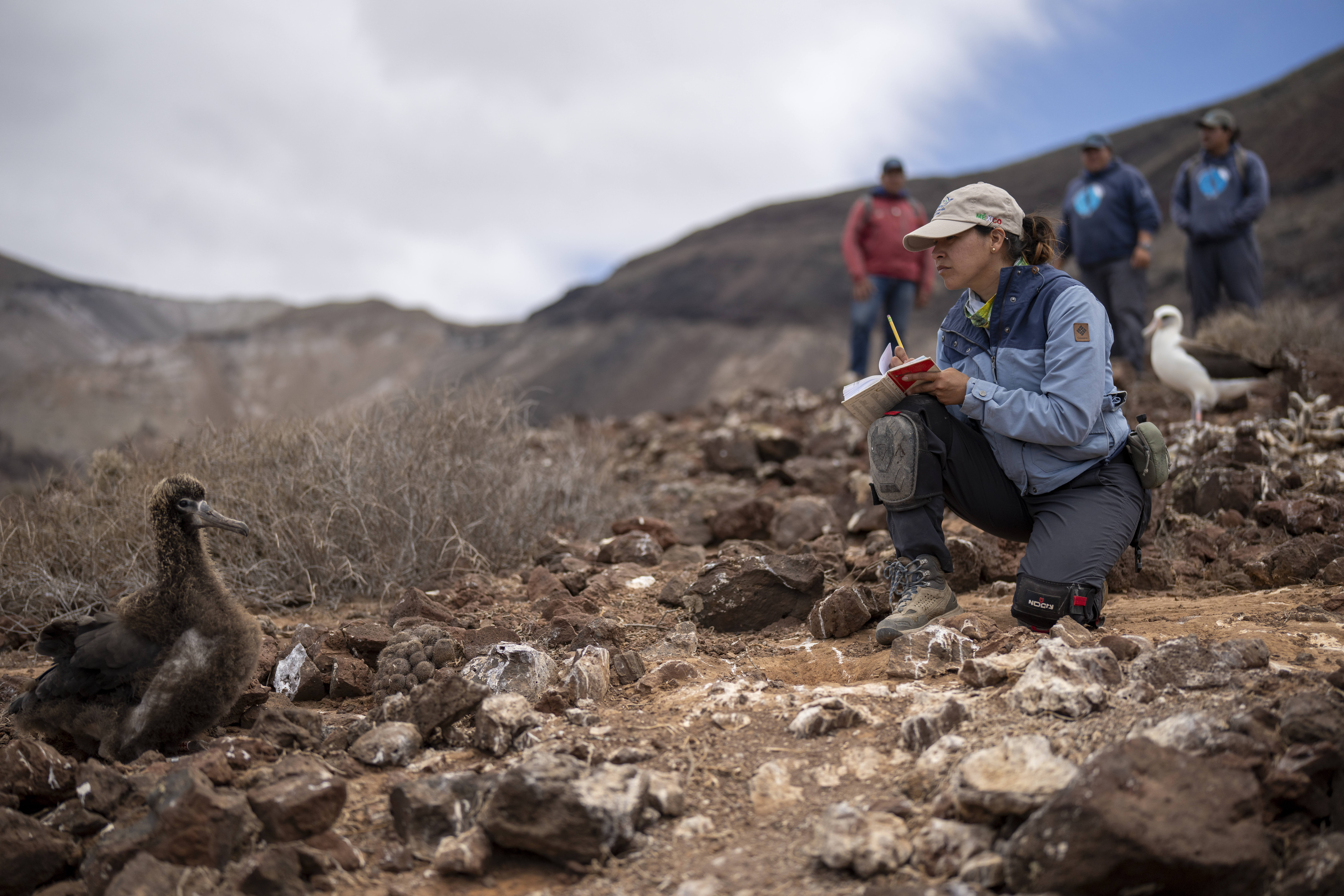 Recording a Laysan Albatross chick, UN World Restoration Flagship Comprehensive Island Restoration in Mexico, photograph by Todd Brown
Recording a Laysan Albatross chick, UN World Restoration Flagship Comprehensive Island Restoration in Mexico, photograph by Todd Brown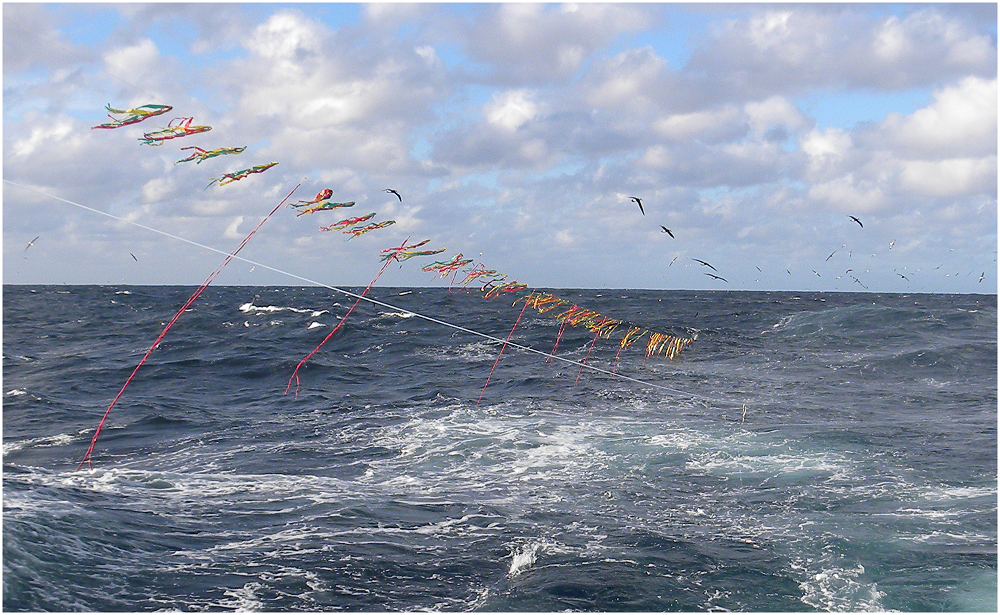 A bird-scaring line in action, photograph by Domingo Jimenez
A bird-scaring line in action, photograph by Domingo Jimenez